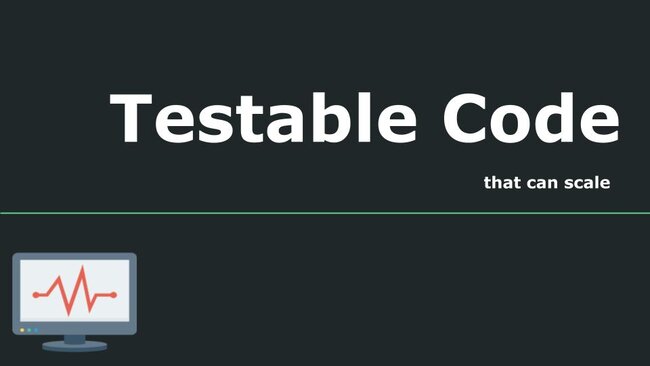
Some people might argue that the success of an interview is a pure chance, a strike of luck, the magic alignment of stars, but the reality is that you can still control some variables in the equation that can yield a favorable result. Herein, we’ll analyze the steps to approach a job interview and take charge of the interview process. Now, you have to master all the steps because the person with fewer blind spots always wins (touché!).
First Step

Sorry to disappoint you, but this one is going to be very obvious. Master your subject well. You just have to be an expert. Otherwise, you can’t really control your interview. Without knowing your subject, your interview would be most likely about avoiding certain technical questions, rather than answering them with confidence. As Shane Parrish notes, “make it less about luck every day,” and more about you and your knowledge. A good start is preparing yourself for technical questions. Now, lucky for you, we’ve gathered some of those programming questions in our previous blog posts. Check it:
here: JavaScript Interview Questions Part 1, Part 2 (Part 3 is coming, so stay tuned)
here: Python Interview Questions
here: Django Interview Questions
here: Angular Interview Questions
here: Vue Interview Questions, and
here: Java Interview Questions
Second Step

By now, we have made a very bold assumption that you’re pretty smart to dress well and act confident. If not, then, I guess it’s best you start from something like What to Wear and What Not to Wear for an Interview (sorry, I can’t vouch for the quality of the book, but you get the idea), and Act Like a Leader (this one is a bit easy to recommend, though).
The stance you need to take is that you talk about the things you need to talk about to show off the best of yourself, to prove yourself as a leader. Regardless of the interviewer’s experience, their mood, the quality of the questions you receive, make it about you, not about them. Now, how would you achieve that? It’s about preparation, again.
So the second step is to know what information you must communicate to land a job offer. What are the requirements of the employer? Is there additional information not covered in the job description? When you arrive with the set of required skills, include the portion of each of those requirements into every answer you give to your prospective employer. Basically, you need to match up all the things the employer seeks with something you already have. In Thinking on Your Feet, Marian K. Woodall recommends taking a sheet of paper and drawing two columns, one for the skills and preferences of your potential employer and the other for the matching skills you have. Use the power of deduction and infer from the job description, the company’s website, or any other third-party information you dig in, what your employer might want and be looking for, and use that to your advantage.
Third Step

This is the most difficult step, yet it’s also the most exciting and challenging. The trick is to turn around the questions that don’t work for you directly so that they start working for you. For example, if someone asks you a question about what you rather not talk about, rephrase this question in such a subtle way and talk about what you really want. Now, how would you exactly achieve that? There are several strategies you can employ:
Buy time
Whenever you’re asked a question that’s vague, ambiguous, reckless, irresponsible, inadequate, and whatnot, you might feel the emotional urge to jump into the conversation and stand your ground. But that’s not a very good strategy if you want to win the battle. The best one here would be just waiting. Allow yourself to pause for a few seconds. Don’t fill the conversation gap with “hmm” or “uhhh” or something eerily awkward. Pause, then repeat the question and try your best at answering it.
Get a better question
However, a better strategy would be to pause and ask the interviewer to repeat the question or ask for clarification. That way you may end up with a better question, or moreover, completely new question, which is unlikely, but still possible. The delay in providing the response will get you more time to think through it. One way to ask for clarification is to ask a question back.
For example, “So you’re asking about my previous employment; are you asking to tell you about my experience in the company X or Y?”
Another way is to ask for a definition.
For example, when someone asks you how you deal with stress, or what strategy you employ while working under stress conditions, ask back: “What do you mean by stress conditions?” or “Define stress in tech.”
And the last clarification strategy is to come up with a definition yourself.
For example, an interviewer asks: “Why do you think your investment pitch was a failure and you dropped a startup idea entirely?” Respond with: “If by failure you simply mean that I didn’t attract the necessary investment and nothing good came out of it, then I have a different idea. By going through this experience, which was profoundly new, I gained much more than I actually lost: the life-long lessons I learned, the entrepreneurs I met, the books I read, the connections I established within the governmental organizations, these are now my assets, and no one can take that away from me.”
Respond only to one aspect of the question
There are some multifaceted questions that try to address multiple aspects of the same question. If you’d better not answer some part of such a question, but okay with answering another one, then concentrate on that exact part you’re comfortable with responding.
For example, “How did you feel about your previous employer? How much did they pay you? Answer: “My previous employer was really a fantastic company. The culture was very diverse and the management was open-minded. Every Friday, we would get off work and gather with colleagues at the local bar where we discussed the results of the week and planned ahead. I left because it took me so much time to commute back and forth, and my family couldn’t relocate, so I started looking for something closer to home, to spend more time with my family and my little son.”
Refocus the question
If someone asks you a question that you’re not qualified to answer or feel like rather not answering, then you may refocus the question by taking one word from the question asked (not a topic word) and concentrate your answer around that particular word.
For example, “How do you think you performed at your last interview? Did you feel confident or experienced enough to be considered?” Answer: “Oh, I felt very confident. I am sure my confidence must have blinded them.”
The word you reuse here is “confident.”
Discuss the question
Even if you feel like people are looking for a specific answer, sometimes all they want is to discuss it with you. Engage your interviewer in an interesting discussion because sometimes there are two sides of the idea, two opposing views, and there’s not a singular answer to that.
For example, “Why were not you happy in your previous role?” Answer: “What has given you the impression that I was not happy?”
Bridge the question
This technique means building a bridge between what you’ve actually been asked and what you really want to answer. The trickiest part is to move your speech as smoothly as possible, so the bridge is very subtle and can hardly be perceived as a diversion from the main topic. To do this, try to define the topic first and see how you can get to the logical point where you divert the course of the question into something that you can actually answer.
For example, “Tell me about the project at your previous job that you led from start to finish.” Answer: “Managing projects from start to finish is very important, some projects are never finished, and this is what I truly try to avoid. I do everything possible to manage my team so we get it done within the designated amount of time. And I think managing teams is not only a valuable skill on a job per se but in life outside work as well (bridge). For example, last summer I volunteered in Brazil where I was assigned to help build an eco-farm from scratch. It was a fantastic experience for me and I got to learn how to communicate with different ethnic groups that could barely speak English. We had a huge success building the farm and I plan to continue supporting the project remotely.”
Pivot the question
Pivoting works by acknowledging the larger issue first, and then narrowing your answer to pivot from the main topic of the question entirely.
For example, “What experience do you have to be considered as the best candidate for the job?” Answer: I worked in company A, and in company B, and company C, I have gained knowledge in programming language A, B, C, I spent time managing teams, etc.”
You get the idea, right? Rather than saying directly what experience you have for the job you’re applying for, you list all your best qualities or name the jobs that seem the most relevant.
Use the final moments
Reiterate your key skills that match with the job description. And ask effective questions that would yet again highlight your matching qualities for the job.
For example, “Your job description also mentions the knowledge of Adobe Illustrator. I’ve had plenty of experience working with this program. What specific things or projects would require the knowledge of image editing software?”
Conclusion
With these techniques, you’ll be super prepared for an interview. Moreover, you’ll actively engage in the interview and project your best image. There’s no use in being passive, try being proactive for once, and you’ll see where it leads you.






